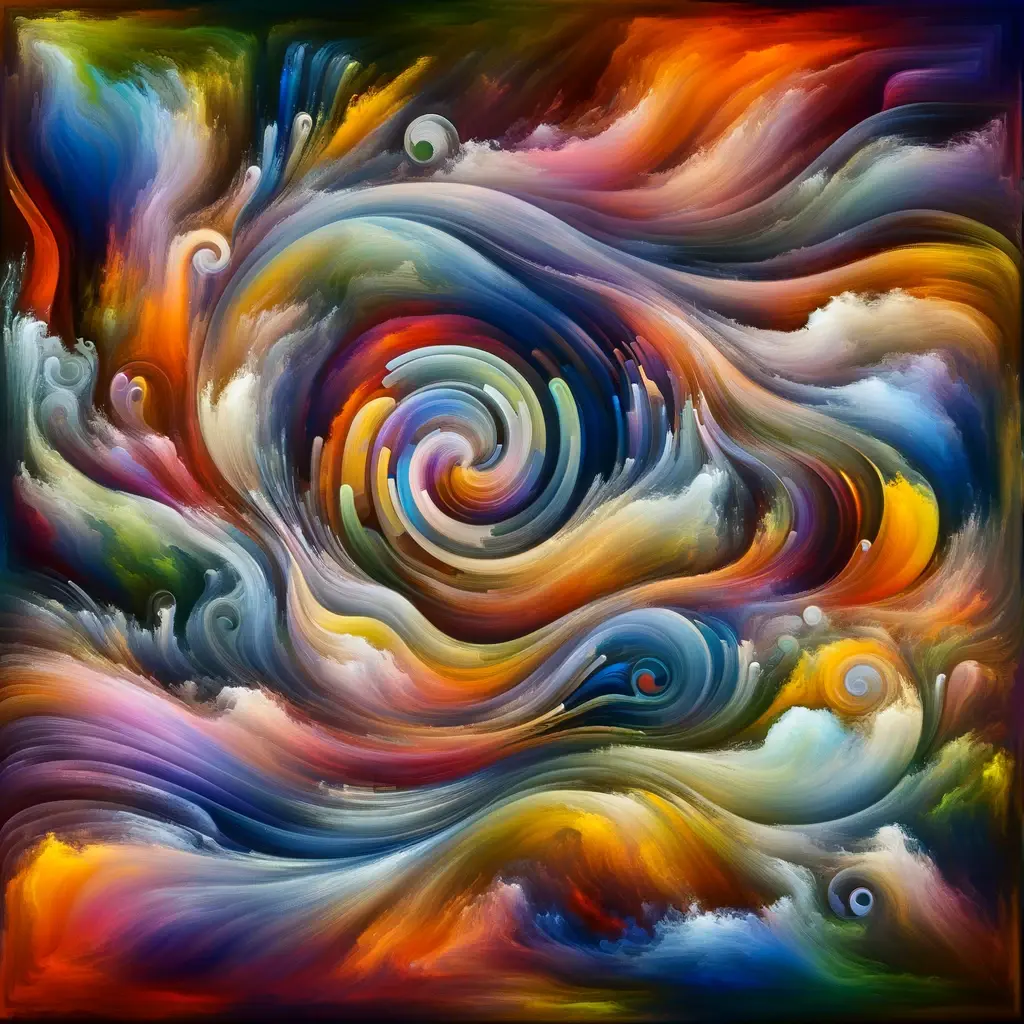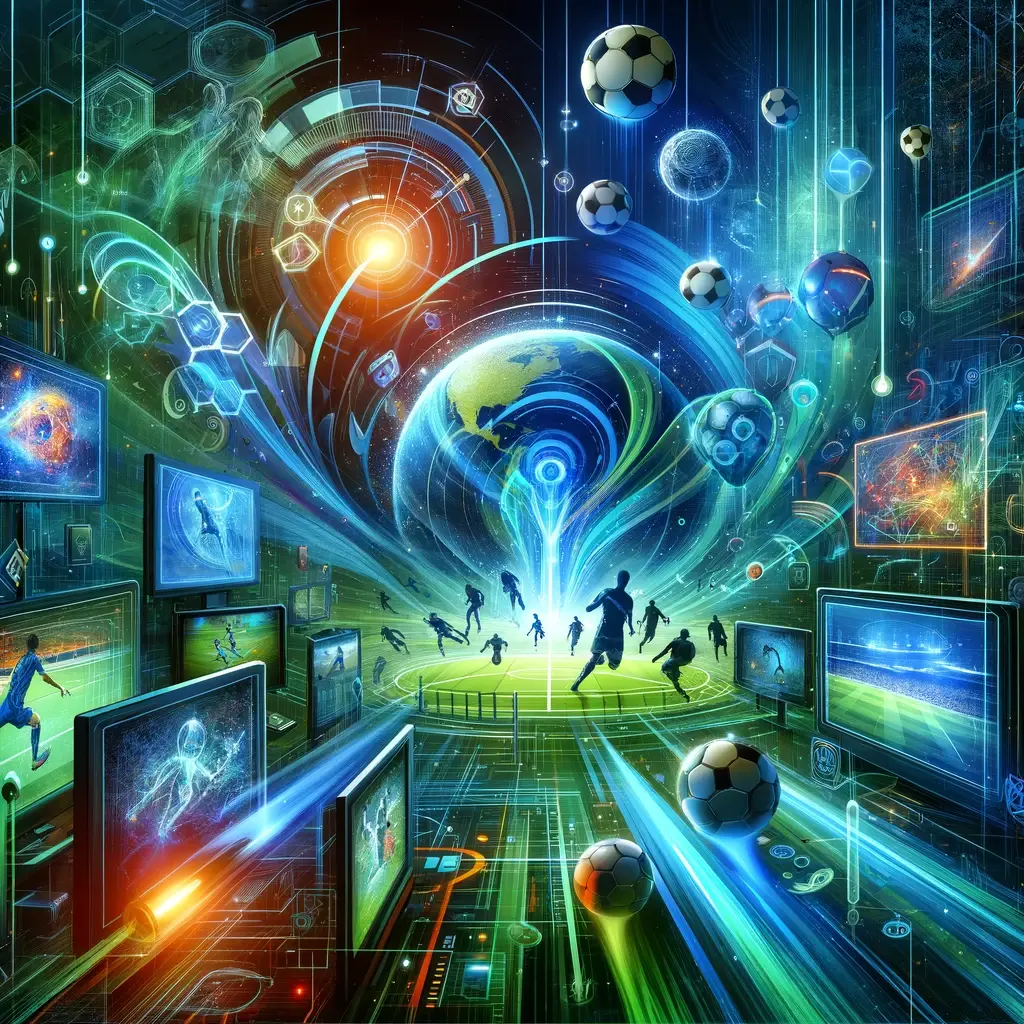Introduction
In a world perpetually in motion, the notion of that which “flows by” is as pervasive as it is profound. It’s a concept that finds resonance in the babbling brooks, the drifting clouds, and even the ticking hands of a clock. ‘Flow’ is an embodiment of change, movement, and the relentless passage of time. It’s a fundamental characteristic of our universe, underlying the very fabric of existence and the rhythms of life.
At its heart, that which flows by signifies more than mere movement; it’s a metaphor for transformation and continuity. This concept, so elegantly simple yet infinitely complex, has captivated thinkers, poets, and scientists alike. From the ancient philosophies that pondered the flow of natural elements to modern theories that explore the fluidity of time and space, ‘flow’ has been a constant subject of fascination and inquiry.
In our exploration, we seek to uncover the multifaceted manifestations that which flows by in the natural world, in human experience, and in the abstract realms of thought and emotion. We’ll journey through the physical flows that shape our planet – the rivers, oceans, and winds that carve landscapes and climates. We’ll contemplate the flow of time, a relentless current that shapes history, cultures, and individual lives. Our voyage will also take us into the realms of energy, ideas, and emotions, exploring how these intangible flows influence our world and our perceptions of it.
As we delve into these diverse aspects of flow, we aim to paint a vivid picture of its omnipresence and its impact. This journey is about understanding the dynamic and ever-changing nature of our existence, and learning to navigate the currents of life with grace, resilience, and understanding. “That Which Flows By” is not just about observing the external movements around us; it’s about recognizing and embracing the that which flows by within us, and the unseen currents that connect us all in the vast, flowing tapestry of life.
That which flows by Water
Water, in its ceaseless motion, is a primary and powerful embodiment of the concept of flow. This section explores the various dimensions of water’s flow, from the meandering rivers to the vast ocean currents, and its profound symbolism in humana culture and literature.
Rivers and Streams
Rivers and streams, nature’s artful sculptors, have etched their paths across the earth’s surface for eons. These watercourses are the veins through which the lifeblood of the planet flows. They nurture ecosystems, shape landscapes, and have been pivotal in the development of human civilizations. The journey of a river, from a trickling source to a mighty estuary, mirrors the journey of life itself, complete with calm stretches and turbulent rapids.
That which flows by of rivers and streams is a delicate dance of nature’s forces. It is governed by gravity, topography, and the interplay with the surrounding environment. That which flows by is not just the movement of water; it encapsulates a complex ecological process, carrying nutrients, supporting diverse species, and shaping geological features.
In many cultures, rivers have sacred connotations. They are seen as sources of life and spiritual cleansing. The Ganges in India, for example, is revered as a purifier of souls. Rivers also inspire art, poetry, and literature, often symbolizing the passage of time, the journey of life, and the inevitability of change.
The Ocean’s Currents
Beyond the rivers and streams lie the vast, mysterious expanses of the oceans. The oceans’ currents are colossal in scale and critical in their role. They regulate the earth’s climate, distribute heat, and connect distant ecosystems. These currents are driven by a complex system of wind patterns, the rotation of the earth, and variations in water temperature and salinity.
Ocean currents are like conveyor belts, moving warm water from the equator towards the poles and cold water from the poles back to the tropics. This continual flow is essential for maintaining the delicate balance of the earth’s climate. The El Niño and La Niña phenomena, resulting from variations in the Pacific Ocean’s currents, exemplify the global impact of these oceanic that which flows by.
Symbolism in Culture and Literature
Water, especially flowing water, has profound symbolic significance. It often represents purity, life, renewal, and the passage of time. In literature and mythology, water is a common motif representing transformation, emotion, and the subconscious.
In many literary works, rivers are depicted as symbols of life’s journey, reflecting the human experience with their ever-changing yet constant nature. For instance, in Mark Twain’s “Adventures of Huckleberry Finn,” the Mississippi River is a symbol of freedom and the fluidity of life. Similarly, in ancient mythology, rivers often demarcated boundaries between worlds, symbolizing transitions and the flow of life into the afterlife.
That which flows by Time
The flow of time is an omnipresent, yet intangible force in our lives. It influences our perceptions, history, and daily existence. In this section, we explore how time flows, its impact on human life, and its philosophical implications.
Perception of Time
Time, often described as the fourth dimension, is a constant in our lives, yet our perception of it is anything but steady. It speeds up in moments of joy and drags during periods of distress. This subjective experience of time is a fascinating aspect of human psychology. It’s influenced by various factors including age, emotional state, and the novelty of experiences.
Scientifically, time is measured uniformly, but individual experience varies greatly. This discrepancy has been a subject of interest in both psychology and philosophy. For instance, the ‘proportional theory’ suggests that as we age, each year forms a smaller percentage of our total life, thus seeming to pass more quickly.
Historical Perspectives
Throughout history, humans have sought to measure and understand time. Ancient civilizations observed celestial bodies to create calendars. Sundials, water clocks, and later, mechanical clocks, were developed to quantify time’s passage.
Different cultures have unique perspectives on time. Some see it as linear, a one-way journey from past to future. Others view it as cyclical, like the seasons or life cycles. These perspectives shape cultural attitudes towards life, legacy, and the afterlife.
The flow of time has been a central theme in literature and philosophy. From the ancient writings of Heraclitus, who famously said, “No man ever steps in the same river twice,” to modern theories of relativity by Einstein, time has been a subject of deep contemplation and debate.
Impact on Human Life and Philosophy
The flow of time impacts every aspect of human existence. It governs our routines, aging process, and our perception of history and progress. Philosophically, time has been a topic of great debate, with questions about determinism, free will, and the nature of the present moment.
In modern society, the concept of ‘time management’ speaks to our desire to control and optimize the flow of time in our lives. The awareness of time’s passage also brings a sense of urgency and a desire to find meaning and purpose in our finite lives.
The Flow of Energy (that which flows by)
Energy, in its various forms, is a dynamic and vital flow that powers our world. This section delves into natural energy that which flows by like wind, solar, and thermal energies, examines human-created energy systems, and discusses the sustainability and environmental impacts of these that which flows by.
Natural Energy Flows That which flows by
The natural world is a symphony of energy flows, each playing a crucial role in sustaining life and shaping the environment.
Wind Energy: That which flows by of wind, driven by temperature differences in the atmosphere, is a powerful and renewable source of energy. Wind farms harness this energy, converting kinetic wind energy into electricity. Wind flow patterns also significantly influence weather systems and climate patterns.
Solar Energy: The sun is the ultimate source of energy, driving the flow of energy on Earth. Solar radiation supports photosynthesis, which is essential for life. Solar energy is also harnessed through photovoltaic cells, converting sunlight directly into electricity. This sustainable energy source is key in addressing climate change and reducing reliance on fossil fuels.
Thermal Energy: The Earth itself is a source of energy. Geothermal energy, resulting from the Earth’s internal heat, is harnessed for heating and power generation. Ocean thermal energy conversion, which uses temperature differences in ocean water, is another form of sustainable energy flow being explored.
Human-Created Energy Systems
Humanity has developed complex systems to harness, convert, and distribute energy. From the steam engines of the Industrial Revolution to modern electrical grids, these systems reflect our evolving understanding and manipulation of energy flows.
Electricity is a primary form of energy in modern society, flowing through vast and intricate grid networks. The generation, transmission, and distribution of electrical energy involve numerous processes and technologies, each with its own impact on the environment and society.
The development of renewable energy systems, like wind turbines and solar panels, marks a significant shift in how we perceive and utilize energy flows. These technologies align with a growing awareness of the need for sustainable and environmentally friendly energy sources.
Sustainability and Environmental Impact
That which flows by of energy is intrinsically linked to environmental and sustainability issues. The extraction and use of fossil fuels, for instance, have led to significant environmental degradation and are a major contributor to climate change.
Renewable energy sources offer a more sustainable way of managing energy flows. By harnessing natural energy sources, we can reduce our carbon footprint and mitigate the adverse effects of climate change. However, the transition to renewable energy is not without challenges, including technological limitations, economic factors, and the need for systemic changes in energy infrastructure.
The Flow of Ideas and Information
In the modern world, the flow of ideas and information is as vital as any physical that which flows by. This section explores the evolution of communication, the impact of the digital era, and the role of media and education in managing this flow.
That which flows by Communication Evolution
The history of human communication is a story of innovation and adaptation, mirroring that which flows by of ideas across time and cultures. From ancient cave paintings and oral traditions to the invention of writing and the printing press, each advancement has expanded the capacity to share knowledge and ideas.
The development of telecommunication, including the telegraph, telephone, and radio, revolutionized the speed and reach of communication. Today, digital technology and the internet have created an unprecedented flow of information. Social media platforms, websites, and online forums facilitate instant global communication and information exchange.
The Digital Era and Information Overload
The digital era has ushered in an age of information abundance, profoundly impacting how we consume, process, and value information. The sheer volume of data available at our fingertips is overwhelming, leading to phenomena like information overload and digital fatigue.
This constant that which flows by of information has both positive and negative impacts. On one hand, it fosters global awareness, knowledge sharing, and connectivity. On the other, it can lead to misinformation, shortened attention spans, and a lack of depth in understanding.
Navigating this flood of digital information requires critical thinking and selective consumption. The ability to discern credible sources and relevant content is crucial in the digital landscape.
The Role of Media and Education
Media and education play pivotal roles in shaping the flow of ideas and information. The media, encompassing news outlets, entertainment, and social platforms, not only informs but also influences public opinion and culture. The responsibility of the media in ensuring accurate and balanced reporting is more significant than ever in the age of instant news and viral content.
Education, on the other hand, equips individuals with the skills to navigate and contribute to the flow of information. It fosters critical thinking, media literacy, and the ability to engage with complex ideas. In an era where information is abundant, education serves as a filter and amplifier, helping individuals to make sense of the world and shape that which flows by of ideas positively.
The Flow of Emotions and Relationships
The flow of emotions and relationships is a critical aspect of the human experience, influencing our behavior, well-being, and social dynamics. This section delves into the complexities of emotional intelligence, the dynamics of human relationships, and the psychology of change and adaptation.
Emotional Intelligence and Expression
Emotional intelligence is the ability to understand, use, and manage our emotions in positive ways. It involves recognizing one’s own emotions and those of others, developing empathy, and handling interpersonal relationships judiciously and empathetically. That which flows by of emotions within us can be tumultuous or serene, and mastering this flow is crucial for personal well-being and effective communication.
Expression of emotions is equally important. How we express our feelings impacts our relationships and social interactions. Healthy emotional expression allows for constructive dialogue, conflict resolution, and deepening of relationships. In contrast, suppressed or mismanaged emotions can lead to misunderstandings and relational strain.
The Dynamics of Human Relationships
Human relationships are dynamic and constantly evolving. That which flows by through various stages, from formation and maintenance to sometimes dissolution. This flow is influenced by numerous factors including communication, trust, mutual respect, and shared experiences.
The complexity of relationships is evident in the diverse forms they take, such as familial, platonic, romantic, and professional relationships. Each type has its unique dynamics and challenges. Understanding and navigating these relationships require adaptability, empathy, and emotional intelligence.
The Psychology of Change and Adaptation
Change is a constant in life, and our ability to adapt to it is crucial for psychological well-being. That which flows by of life brings various changes, such as transitions in career, personal growth, and changes in social circumstances. How we cope with these changes reflects our resilience and flexibility.
Adaptation involves both accepting what cannot be changed and taking proactive steps to adjust to new circumstances. It also means learning from experiences and growing emotionally and intellectually. The psychology of change is a vast field, encompassing theories of personal development, coping mechanisms, and the impact of life transitions on mental health.
The Flow of Economies and Markets
The flow of economies and markets is a critical driver of global dynamics, shaping nations, societies, and individual lives. This section examines the fluid nature of global economies, the trends and predictions in market movements, and the concept of economic “currents.”
Global Economy Dynamics
The global economy is a complex and interconnected system where goods, services, and capital flow across borders. These flows are influenced by a myriad of factors including trade policies, geopolitical events, technological advancements, and natural resources.
Economic globalization has intensified these flows, linking national economies more closely. This interconnectedness means that economic developments in one part of the world can have ripple effects globally, as seen in the financial crises and economic booms.
Developing and developed economies play different roles in this global flow. While developed economies often provide capital and technology, developing economies contribute labor and raw materials. This dynamic creates a that which flows by of economic activity that shapes global trade patterns and development.
Market Trends and Predictions
Market trends refer to the general direction in which a market or the price of a specific asset is moving. These trends are influenced by a variety of factors, including economic indicators, corporate performance, political stability, and consumer behavior.
Predicting market trends is a complex endeavor involving economic analysis, statistical modeling, and a degree of speculation. Analysts study market trends to understand investment opportunities and risks. However, markets are often unpredictable, and trends can change rapidly due to unforeseen events.
The Concept of Economic “Currents”
Just as rivers have currents, economies have underlying movements that influence their direction. These “currents” can be demographic shifts, technological advancements, changes in consumer preferences, or regulatory changes.
Understanding these economic currents is crucial for policymakers, businesses, and investors. It allows them to anticipate changes, adapt strategies, and make informed decisions. For instance, the aging population in many developed countries has significant implications for healthcare, pension systems, and labor markets.
Conclusion
As we conclude our exploration of “That Which Flows By,” it’s evident that the concept of flow is a fundamental aspect of our existence. From the tangible that which flows by of water and energy to the intangible flows of time, ideas, emotions, and economic currents, each stream contributes to the rich and complex tapestry of life.
Summarizing the Interconnectedness of Flows
The interconnectedness of these various flows is striking. The flow of water shapes our planet and supports life, which in turn is governed by the flow of time, marking our existence and history. The flow of energy powers our world, while that which flows by of ideas and information shapes our knowledge and culture. The emotional and relational flows dictate our personal experiences and social dynamics, and the economic flows drive global interactions and individual livelihoods.
Understanding these flows is crucial for navigating life’s complexities. It allows us to appreciate the balance and harmony in nature and society, and the importance of adapting to constant change.
Reflecting on the Importance of Understanding and Adapting to Flows
Adaptation is a key theme when considering these flows. Just as a river adapts to the landscape, we too must learn to adapt to the ever-changing flows of life. This adaptation requires awareness, flexibility, and resilience. Whether it’s adapting to new technologies, shifting economic landscapes, evolving social norms, or our personal emotional journeys, the ability to flow with change is integral to growth and well-being.


